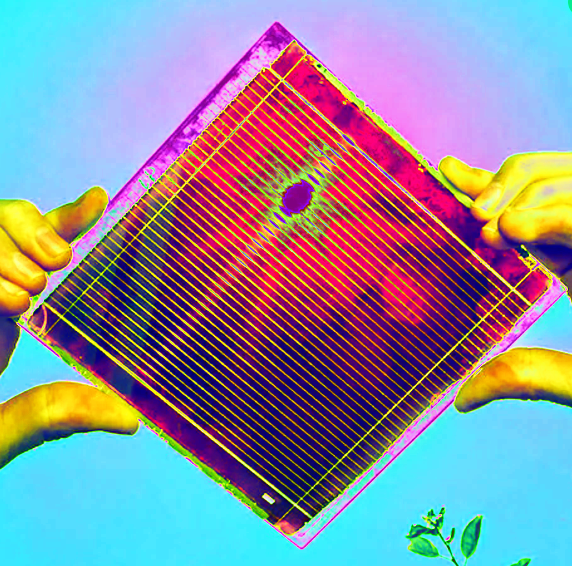Solar 'sandwich' discovered
 Australian scientists are feeding the world’s hunger for new solar technologies, serving up a high-tech sandwich.
Australian scientists are feeding the world’s hunger for new solar technologies, serving up a high-tech sandwich.
Perovskite is one of the leading candidate materials in new solar energy research and design.
Engineers are working on new cells based on 2D perovskite films with an apparent ‘gradient’ structure, in which certain components are found deep in the material, with other complementary elements only located nearer to the surface, like topping on a cracker.
But new research has shown that the two-dimensional thin films used in some perovskite solar cells actually resemble a sandwich.
The study provides evidence for a sandwich-like structure, in which two layers of the same type (the bread) surround one central, contrasting layer (the filling).
This layout encourages excitons - quasiparticles important for converting sunlight to electricity - to move from the central layer to both surfaces of the film, while free carriers transport charge for collection by electrodes, helping to result in more efficient solar energy generation when incorporated into devices.
“A real problem has been understanding what the structure of these 2D perovskite solar cells really is,” researcher Professor Ken Ghiggino said.
“There’s been quite a lot of controversy in the literature. The advance that we’ve achieved is to find out what the real structure of these films is and how they work in a solar cell.”
2D perovskite devices are of particular interest due to their superior stability and durability relative to ‘3D’ perovskite cells. Prototype 2D devices, developed by the researchers using infrastructure at CSIRO, have demonstrated 13 per cent efficiency.
With greater fundamental understanding of the structure, the researchers will now attempt to increase device efficiency by changing the thickness of the layers within the perovskite ‘sandwich’.
In addition to solar cells, improved 2D perovskite films have important applications in light-emitting diodes (LEDs) and photodetectors, such as video imaging, optical communications, biomedical imaging, security, night-vision, gas sensing, and motion detection.
“This is the first time a sandwich structure has been proposed versus the conventional gradient distribution model,” says lead author Dr Fei Zheng.
“We think this discovery will help design and device optimisation for higher performance of the 2D cells and LEDs.”







 Print
Print